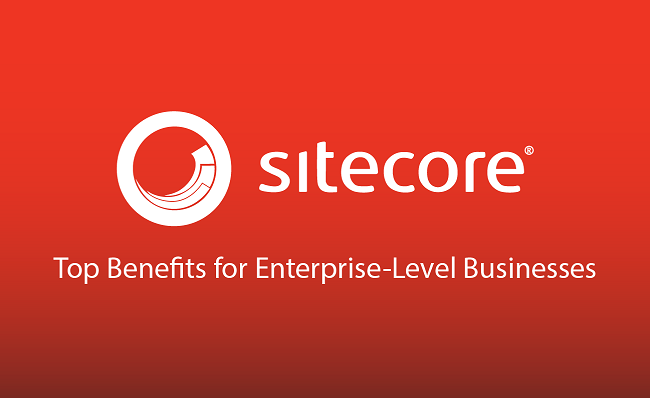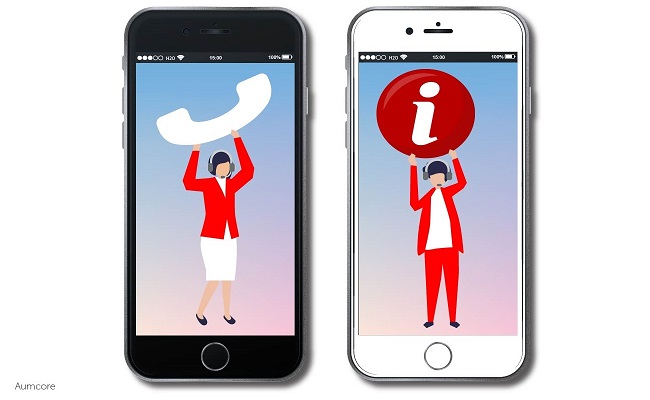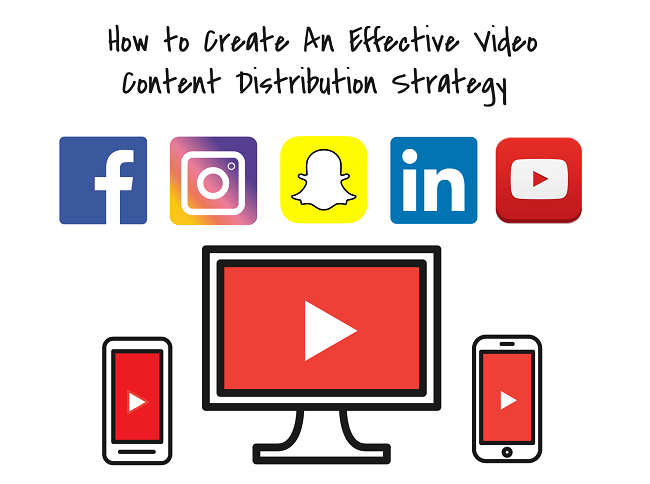Ever since we entered the digital age, businesses of all sizes were introduced to content management systems (CMSs) as a means of creating, editing, organizing and publishing content. In the years since, CMSs have become an invaluable tool with an extensive array of uses and capabilities that the vast majority of businesses can’t live without. And then there’s a WCMS, which is essentially a CMS for the online web, hence the ‘W’ before ‘CMS’ (web content management system). Within this context, a WCMS is a specific type of CMS software dedicated to websites that allows businesses to create, manage and distribute online content, such as images, videos, infographics, and a whole bunch of other things.
With that in mind, we’ll stick to calling all of them CMSs for today’s discussion. As you can imagine, there are countless CMSs out there that are waiting to be used by all businesses. But what about an enterprise-level business? Considering how much content and users they have relative to smaller organizations, what can such a business do? Can they use the same CMS as a mom and pop shop with a single website? Possibly, but it wouldn’t be wise. Instead, what they need is a CMS that can scale for enterprise needs. What they need is Sitecore.
Why Is Sitecore the Best Choice for Enterprise-Level Businesses?
So, why is Sitecore perfect for enterprise development? In short, because of all the Sitecore enterprise solutions that can be gained from it. More specifically, Sitecore is one of the top CMS systems in the market because of its uncanny ability to help marketers create seamless experiences that have been personalized specifically for their users. As their website states:
Sitecore CMS is the robust content management system that scales for enterprise needs. Global brands turn to Sitecore for multisite and multilingual content management—at scale, with the flexibility that enterprises demand. Millions of experiences are delivered reliably and securely every day with Sitecore Experience Manager.
That’s what they say. What we digital marketers have to say is that Sitecore is a powerful CMS that delivers next-level marketing automation in the form of contextual customer experiences. For instance, even though there are literally hundreds of different CMS options at your disposal, Sitecore beats them all because it’s a content management system that operates within the context of a user’s interaction history, meaning that those who use it can offer more relevant products and services to their customers.
For this reason—Sitecore’s ability to operate within the context of a user’s interactions—amongst many more, Sitecore is often our CMS of choice. After all, we at Aumcore are a certified Sitecore development agency that understands its power and all it can do for the enterprise, i.e. give them the ability to offer tailored recommendations backed by machine learning to ensure they’re accurate and best represent what a user truly wants.
That being said, if you’re still unsure about why to choose Sitecore, no worries. The very point of this post is to show you some of what it can do and how you can benefit from it, so you better get ready to learn!
1. The Sitecore Experience Platform
Starting with the Sitecore Experience Platform (XP), the very thing that allows users to operate at scale while delivering custom personalization in Sitecore, you’re already in good hands. With it, you can deliver on three capabilities we’ll cover in more detail shortly:
- Web content management that scales as the need arises so you can grow as much as you can
- Customer intelligence that tracks every action your users take so you can make the most of them
- Cross-channel delivery that delivers a connected experience across channels so conversations are always as seamless as they are important
As you can see, the XP allows you to track every interaction your users have within your business’ digital channels thanks to AI and machine learning, giving you actionable information you would have never been able to gather from traditional metrics. In other words, it provides a holistic view of customer data so you can better engage with them and deliver completely personalized experiences across channels.
2. Web Content Management
And now we move onto one of the XP’s main capabilities: robust content management that scales for enterprise needs. One of the best parts of Sitecore’s web content management is that it was built from the ground up so it could be as flexible and inclusive as possible. For example, not only does it support global, multilingual content at scale, but it’s also so easy to use that even marketers with no coding experience can easily use it. And if they do, or if they have experienced IT teams ready to help them out, they can really dig into the details and customize everything to their heart’s content.
As for specific features you’ll encounter with it, take a look at some we’ve highlighted on our Sitecore development page:
- Decouples content from presentation: Sitecore automatically serves content in the best format for every user’s device with a write-once, distribute-across-any-channel approach.
- Offers in-session personalization: Everything from text and rich media, to social media widgets and promotions, can be personalized, allowing you to set up personalization rules to deliver targeted, relevant content to unique visitors, visitor types or personas.
- Manages multilingual content: Sitecore natively handles multilingual content, allowing content creators to write in their native language and translate globally.
- Supports multiple sites: For enterprise needs, Sitecore lets you share content across thousands of sites to maintain a consistent experience on every one.
- Optimized for mobile and display-agnostic: Sitecore has a device detection module that automatically detects and optimizes content for each user’s device. Its geo-IP detection package also lets you personalize customer experience based on physical location.
- Delivers implementation speed: Sitecore’s Web Experience Manager reduces web development from months to weeks by offering drag-and-drop templates for commonly used page components.
3. Customer Intelligence
After web content management comes customer intelligence, which tracks every interaction your users have with your brand from beginning to end (e.g. clicks, page visits, purchases, etc.); interactions you can leverage in your strategies to deliver memorable experiences that are tailored for individual wants and needs. Even better is the fact that all of this is achieved through contextual intelligence gathered in a repository of historical and real-time customer data, including things they’ve viewed, clicked on, bought, and so on.
Like we did for web content management, take a look at some features we’ve highlighted:
- Collects data from everywhere: Data is collected from everywhere, even from non-Sitecore-based systems, and is stored in a single data repository (xDB).
- Creates a complete customer profile: As customer data is collected, Sitecore XP creates an Experience Profile (xProfile) for each individual. xProfiles continually learn who your customers are and become richer and richer with every interaction with your brand.
- Enables testing and optimization: You can optimize your campaigns and see whether they’re underperforming for specific demographics or segments with A/B and multivariate testing, goal tracking and path analysis.
- Analyzes the value of customer experiences: Sitecore enables you to measure and score the value of every customer interaction, letting you quickly understand how channels work together to drive engagement.
- Tracks visitor paths: Sitecore maps your customer’s journey through your site and tracks how they interact with your content on a large scale.
- Leverages the power of MongoDB: Sitecore xDB is built on MongoDB, the fastest NoSQL database technology on the market, and enables you to scale as your volume of experience data grows.
4. Cross-Channel Delivery
If you’ve ever dreamed of delivering a connected experience across channels that doesn’t miss a beat and flows as natural as a conversation between lifelong friends, Sitecore and their cross-channel delivery capabilities are just for you. Actually, even if you haven’t, they’re still for you because we currently live in a connected world characterized by users who interact with their favorite brands across channels and devices. In other words, if they’re using this and that to connect with you, you need to know what was said on that so you can make the most of what they’re doing on this. Thankfully, Sitecore allows you to do exactly that (and this) by creating a unified experience that considers every since interaction with your brand as an important touchpoint to remember.
As before, here are some features we’ve highlighted for Sitecore’s cross-channel delivery capabilities:
- Email experience: Leverage contextual intelligence in real-time to deliver the perfect email offer when your leads are the most receptive.
- Mobile web and applications: Sitecore lets you engage customers wherever they are, on whatever device they have. You can also incorporate web content into mobile apps with the Sitecore Mobile SDK for Android, iOS and Windows devices.
- Social marketing: With Sitecore, you can share content on social media sites like Instagram, Facebook and LinkedIn, and measure the success of your paid marketing efforts in a single interface. You can then use what you’ve learned to further personalize customer experiences.
- Commerce and retail: Sitecore unifies your marketing and online business across the entire customer life cycle to keep visitors coming back.
- Dynamic print: Print is not dead, and with Sitecore you can use all your customer experience data to deliver personalized print content.
- Non-Sitecore websites: You can serve tailored experiences on your non-Sitecore sites and still track customer interactions to deliver a single experience across channels.
5. Sitecore Cortex Content Tagging
Finally, the last Sitecore benefit we’ll cover today revolves around Sitecore Cortex Content Tagging, which is a very efficient way of tagging things that are mentioned in your content, such as people, places, products, companies, facts, events and much more. Why would you want to do this, you ask? Because it uses machine learning based natural language processing engines to automatically tag content with intelligent recommendations that greatly increases its value by making it even more accessible and interoperable.
Final Thoughts
Whether you want Sitecore for healthcare or Sitecore for fashion, one thing should be clear after today: Sitecore is for you if you’re part of an enterprise, and even if you’re not! If you’re still unsure, how about taking a look at a Sitecore case study or two, which you can find on this page of Sitecore success stories?





Tell us your thoughts in the comments